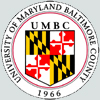| |||||||||||||||||||||||||||||||||||||||||||||||||||
Tips:  Range on the Protein: Protein ID Protein Position Domain Position: 
|
|---|
Weblogos are Copyright (c) 2002 Regents of the University of California
| DMDM_info@umbc.edu | 1000 Hilltop Circle, Baltimore, MD 21250 | Department of Biological Sciences | Phone: 410-455-2258 |




 Catalytic domain of the Protein Serine/Threonine Kinase, Nuclear Dbf2-Related kinase 1. Serine/Threonine Kinases (STKs), NDR kinase subfamily, NDR1 isoform, catalytic (c) domain. STKs catalyze the transfer of the gamma-phosphoryl group from ATP to serine/threonine residues on protein substrates. The NDR subfamily is part of a larger superfamily that includes the catalytic domains of other protein STKs, protein tyrosine kinases, RIO kinases, aminoglycoside phosphotransferase, choline kinase, and phosphoinositide 3-kinase. NDR kinase contains an N-terminal regulatory (NTR) domain and an insert within the catalytic domain that contains an auto-inhibitory sequence. Like many other AGC kinases, NDR kinase requires phosphorylation at two sites, the activation loop (A-loop) and the hydrophobic motif (HM), for activity. Higher eukaryotes contain two NDR isoforms, NDR1 and NDR2. Both isoforms play a role in proper centrosome duplication. NDR1 is highly expressed in thymus, muscle, lung and spleen. It is not an essential protein because mice deficient of NDR1 remain viable and fertile. However, these mice develop T-cell lymphomas and appear to be hypersenstive to carcinogenic treatment. NDR1 appears to act as a tumor suppressor. NDR1 is also called STK38.
Catalytic domain of the Protein Serine/Threonine Kinase, Nuclear Dbf2-Related kinase 1. Serine/Threonine Kinases (STKs), NDR kinase subfamily, NDR1 isoform, catalytic (c) domain. STKs catalyze the transfer of the gamma-phosphoryl group from ATP to serine/threonine residues on protein substrates. The NDR subfamily is part of a larger superfamily that includes the catalytic domains of other protein STKs, protein tyrosine kinases, RIO kinases, aminoglycoside phosphotransferase, choline kinase, and phosphoinositide 3-kinase. NDR kinase contains an N-terminal regulatory (NTR) domain and an insert within the catalytic domain that contains an auto-inhibitory sequence. Like many other AGC kinases, NDR kinase requires phosphorylation at two sites, the activation loop (A-loop) and the hydrophobic motif (HM), for activity. Higher eukaryotes contain two NDR isoforms, NDR1 and NDR2. Both isoforms play a role in proper centrosome duplication. NDR1 is highly expressed in thymus, muscle, lung and spleen. It is not an essential protein because mice deficient of NDR1 remain viable and fertile. However, these mice develop T-cell lymphomas and appear to be hypersenstive to carcinogenic treatment. NDR1 appears to act as a tumor suppressor. NDR1 is also called STK38. No pairwise interactions are available for this conserved domain.
No pairwise interactions are available for this conserved domain.















